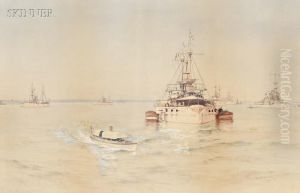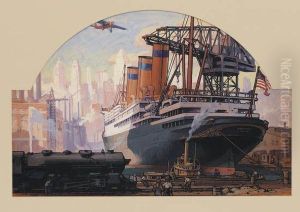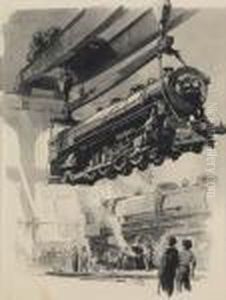Leon Alarac Shafer Paintings
Leon Alarac Shafer, born in 1866, was an American artist whose contributions to the field of illustration and engraving have been noted for their technical skill and artistic finesse. Although not as widely recognized as some of his contemporaries, Shafer's work during the late 19th and early 20th centuries reflects the broader movements of American art during this period, especially the intricate and detailed style favored in engravings and illustrations.
Shafer's career spanned a time of significant change in the art world, moving from the detailed, almost painstaking craftsmanship of engraving to the burgeoning appreciation for newer forms of expression. However, it was his work in the traditional fields that cemented his reputation, particularly his illustrations which often appeared in periodicals, books, and as standalone pieces. His ability to capture intricate details and his masterful use of line work made his engravings highly sought after, both for commercial and decorative purposes.
Beyond his technical abilities, Shafer's artistry also reflected the cultural and social nuances of his time. Through his work, one can glean insights into the aesthetic preferences and the societal norms of the late 19th and early 20th centuries in America. Despite the scarcity of comprehensive biographical details, Shafer's surviving works serve as a testament to his skill and artistic vision.
Leon Alarac Shafer's contributions to American art, though perhaps not as celebrated as some of his peers, remain an important part of the artistic heritage of this period. His death in 1940 marked the end of a career that had successfully bridged the gap between the traditional art forms of the 19th century and the evolving tastes and techniques of the 20th century. Today, his works are valuable not just for their aesthetic appeal but also for their historical significance, offering insights into the evolution of American art and illustration.


